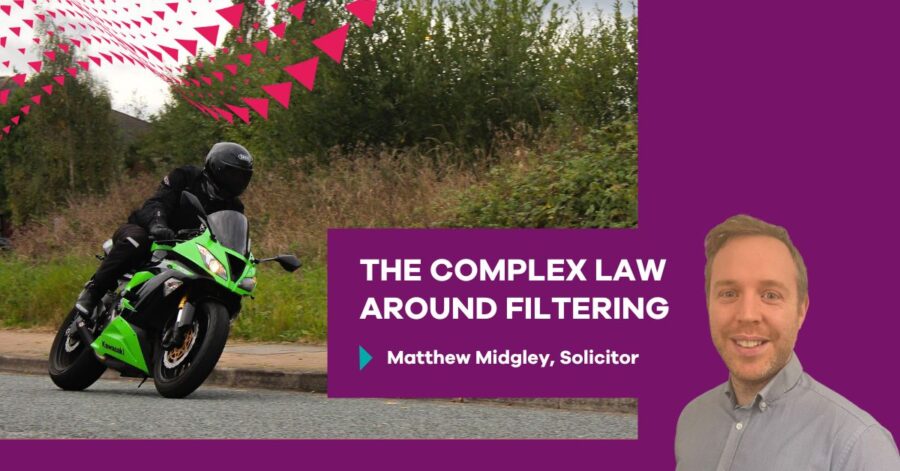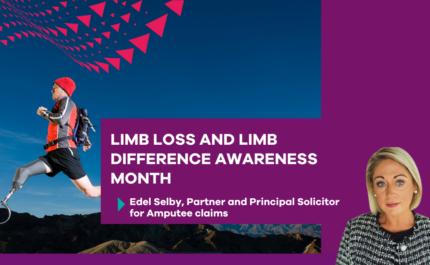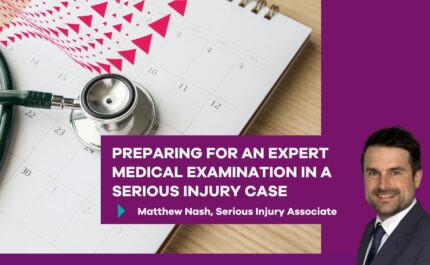
Minster Law Solicitor and Bike team leader, Matthew Midgley, explores some of the rules and guidelines around filtering.
Motorcycle filtering is often a controversial subject, it is often the cause of a disagreement between a biker and another road user, and unfortunately one of the most common contributing factors to the motorcycle accidents we see here at Minster Law.
Filtering gives a biker the beautiful ability to slice through traffic, however there are unfortunately risks associated with it, and considerations all bikers should make before doing so.
To answer the most common question, yes, it is legal, something that not every car driver realises. However, this does not mean people should filter in any situation possible, and indeed, there are grey areas to consider.
Key factors when settling liability on a filtering case
The Highway Code says, “when filtering in slow-moving traffic, take care and keep your speed low”.
This is obviously very much dependent upon the situation. What is considered low speed on a motorway is very different to a city centre or high street.
While the Highway Code is not legislation, it is nevertheless considered alongside case law by the courts in cases involving filtering.
What it often comes down to is the speed differential between the bike, and the vehicle you are passing.
Speed is often the deciding factor if there are to be reductions in compensation for contributory negligence.
Going past slow-moving traffic on a motorway at 70mph is probably not the most sensible thing to do, and this will be represented by the likely reduction in compensation for contributory negligence irrespective of the fact you were not breaking the speed limit.
Likewise, filtering along a dual carriageway at 20mph may, in the circumstances, be reasonable, but should you continue at this speed through a junction, reasonableness could be questioned.
Put simply, this is when other road users tend to get erratic.
So that’s that then, filtering is legal – unfortunately not, as there are many circumstances where you cannot filter.
Motorcyclists should not cross a solid white line, filter through a crossing, and should avoid filtering where there are areas of diagonal stripes or chevrons bordered by a broken white line.
Legalities aside, practically, a filtering biker should always have in their mind that other road users will probably not expect you to be there, so always be ready to take avoiding action.
Some tips and considerations to make filtering as safe as possible
- Gaps in traffic are not a biker’s friend – a gap in traffic should ring alarm bells for a filtering biker as someone will want to fill it. So slow down until you have passed.
- In the same way we expect drivers to be on the lookout for filtering bikes, bikers also need to be on the lookout for crossing pedestrians.
- While filtering, look out for subtle signs of a driver’s impending decision to make a move. Are they looking to the left, or right? Are they lifting themselves up in their seat to peer into a gap? Are they looking in their mirrors?
- Filtering is riskier at night as the only thing other road users see in their mirror, is a light. Likewise, bad weather conditions are also likely to bring more dangers to filtering.
- Being in a relaxed riding position increases your reaction time and helps to combat rider fatigue.
- If you spot a danger, do not become target fixated.
- Expect the unexpected!



